LOVE LAKES OF THE

INSIDE >>
BIG ISLAND VOLUNTEERS
NATIONAL LOON CENTER
TIKI TRADITION ON HORSESHOE LAKE
CHILDREN’S FISHING
CONTEST ON BIRCH LAKE
WINTER WEATHER IMPACTS
HISTORY PRESERVED ON LAKE MARGARET UPPER HAY LAKE RELICS














INSIDE >>
BIG ISLAND VOLUNTEERS
NATIONAL LOON CENTER
TIKI TRADITION ON HORSESHOE LAKE
CHILDREN’S FISHING
CONTEST ON BIRCH LAKE
WINTER WEATHER IMPACTS
HISTORY PRESERVED ON LAKE MARGARET UPPER HAY LAKE RELICS












Whether you’re a full-time lake country resident or a seasonal visitor, I encourage you to enjoy our beautiful lakes and rivers at any time of day, no matter what the season and no matter what the weather.
Take in scenic views from a boat on the water or a restaurant seat overlooking a bay. Stay at an area resort or a friend’s cabin to experience fun on the water.
As part of an informal group that fishes together on different lakes throughout summer, I’ve experienced so many area lakes I’d never ventured to before. We’ve fished in cold and windy weather. In the rain. In the hot sun. On a perfect summer day. It’s always a different experience on a different lake.
It’s quiet and calm in the early morning, with only the sounds of loons and other birds. Activity starts to pick up by mid-morning with personal watercraft and boats pulling tubes, with sounds of squealing laughter. It’s always fascinating to see and experience.
Keep this in mind when reading our 18th edition of Love of the Lakes. You’ll find a story about volunteers who stepped forward to keep Big Island and two smaller islands on Upper Whitefish Lake open to the public. Visit these islands if you get the chance.
If you’re on Horseshoe Lake south of Crosslake, read about the themed bars around the lake where camaraderie abounds. Show up at one and introduce yourself.
Do you have young children? Discover the longstanding Children’s Fishing Contest held every Tuesday in summer on Birch Lake in Hackensack. Take your kids there one week.
If you’re boating on the Gull Chain of Lakes, meander through Lake Margaret and find a former resort that was restored for family and friends to enjoy, all while preserving the resort’s rich history.
We hope you have as much fun reading these stories as we had writing them.
NANCY VOGT | EDITOR



“It looked like you could step off our dock into the clouds. It’s just amazing. I’ve lived on this lake for a lot of years and I never quite saw anything like this,” Carol Lovro said of Norway Lake in Pine River on April 10, 2024.


“We proudly serve customers across Aitkin County, Cass County and Crow Wing County!”
“Shannon’s Auto Body has provided auto body repair in Brainerd, MN since 1996.”
“We go above and beyond to make sure you receive the repair service you deserve.”
“We can repair vehicles of every make and model.”
“Our company is an I-CAR Gold Class Member, ASE Certified and Sikkens Waterborne Certified.”
“Our team is committed to 100% Customer satisfaction.”
“We Offer Sales, Services and parts for both Western Snow Plows and SnowEx plows”






Area: 7,714.19 acres
Shore length: 32.2 miles miles
Deepest point: 138 feet
Water quality: Suitable for swimming and wading, with good clarity and low algae levels throughout the open water season.
Public access to Whitefish:
3 miles North and East of Jenkins on Co Rd 15, then 0.75 mile East on Jenkins Twp Rd. Facilities: 1 concrete ramp, 25 vehicle/trailer parking spaces, 1 dock, 1 toilet. (Other sites on the individual lakes)
Invasive species: Zebra mussels
Fish to catch: Black bullhead, black crappie, bluegill, brown bullhead, burbot, green sunfish, hybrid sunfish, lake whitefish, largemouth bass, northern pike, northern sunfish, pumpkinseed, rock bass, smallmouth bass, tullibee (cisco), walleye, yellow bullhead, yellow perch, bowfin (dogfish), greater redhorse, redhorse, shorthead redhorse, silver redhorse, smallmouth buffalo, white sucker.
Interesting fact: The Whitefish Chain of Lakes was officially named by Congress in the 1800s; however, the name is a direct translation of the traditional Native American name “Kadikumagokag,” or “Lake where there are many whitefish.” The name was first recorded by Joseph Nicollet, French astronomer and American immigrant.
Source: Lake-Link; Minnesota Department of Natural Resources LakeFinder



Big Island recreation area was in danger of closing to the public
By Nancy Vogt
From left, the late Dave Topinka, Adam Werneke and Jim Brandt prepare to clear Big Island trails in summer 2023. Contributed photos / Jim Brandt



The islands are open.
The Rollie Johnson Natural and Recreational Area on the Whitefish Chain of Lakes — more commonly called Big Island — welcomes campers, picnickers, boaters, hikers and other recreationists to enjoy all the area has to offer, just like it has for nearly 25 years.
That almost wasn’t the case as volunteers in their 80s put out a call in the spring of 2023 for younger people to help them maintain Big Island, Steamboat Island and Little Island in the middle of Upper Whitefish Lake in Ideal Township.
“A lot of people contacted us, so people did come forward,” said Jim Brandt, chair of the joint powers board that governs the islands.
In 2023, the board members said they would possibly have to close the islands to the public if 10-12 dependable volunteers didn’t step up to help.

TITLED “SUNSET SUPERMAN,” SAMANTHA ZABUKOVER SHARED THIS PHOTO OF HUK, THEIR ENGLISH SPRINGER SPANIEL, TAKING A SPLASH TO COOL OFF BY DIVING INTO THE DEEP END OF WHITE SAND LAKE IN BAXTER.

Volunteers

PUBLISHER
Pete Mohs ����������������������������������� pete�mohs@brainerddispatch�com
EDITOR
Nancy Vogt nancy vogt@pineandlakes com
ADVERTISING DIRECTOR
Susie Alters susie alters@brainerddispatch com
EDITORIAL CONTRIBUTORS
Pete Mohs ����������������������������������� pete�mohs@brainerddispatch�com
Nancy Vogt ���������������������������������������� nancy�vogt@pineandlakes�com
Travis Grimler������������������������������� travis�grimler@pineandlakes�com
Tom Fraki ������������������������������������������������ tom�fraki@pineandlakes�com
Jeremy Millsop������������������� jeremy�millsop@brainerddispatch�com
Mike Rahn
ADVERTISING:
Kathy Bittner Lee kathy bittnerlee@pineandlakes com General advertising@pineandlakes com, 218-855-5895
MAGAZINE DESIGN
Chris Johnson
MAP DESIGNERS
Katie Hastings, Sara Slaby, Nick Weisser
PRODUCED BY PINEANDLAKES ECHO JOURNAL 506 James St , Brainerd, MN 56401 218-829-4705 www�pineandlakes�com
©2024 Echo Journal
No part of the material contained herein may be reproduced without prior written consent�
Printed by Forum Communications Printing of Fargo, North Dakota
The PineandLakes Echo Journal is a weekly newspaper covering the Pequot Lakes and Pine River areas and is owned by Forum Communications Company in Fargo, North Dakota
Love of the Lakes combines stories with information and maps for different lakes in the area We dedicate the magazine to the families and businesses around each featured lake or lake chain
Sources for lake map information and statistics include the Minnesota Department of Natural Resources: http://www dnr state mn us
We were serious. We couldn’t do it all anymore. We need some good people who can step in for us.
- Jim Brandt
“We were serious. We couldn’t do it all anymore,” Brandt said. “We need some good people who can step in for us.”
Volunteers coordinate and do the work necessary to keep the islands open to the public.
The islands offer 12 campsites, each with a fire pit, on a first-come first served basis; no reservations are taken. There’s no running water or electricity. There are five privies.
Big Island has 1.5 miles of hiking trails.
People can use the islands for free, though there are donation boxes, as well as bulletin boards with information and rules.
Had enough volunteers not stepped up, the joint powers board also considered no longer providing firewood for campsites, eliminating overnight camping and/or fire pits and not having monitors visit the islands during the summer.
They weren’t looking for more campers or people to use the islands; there are plenty of both. They needed volunteers.
Many of the same people have been doing all the work since the islands opened to the public. Back then, they were retirees in their 60s.
Fortunately, new volunteers came forward both at the start and end of summer 2023. About a dozen people indicated interest, though some are seasonal cabin owners or had other projects going on as well.
“We had five good people that came to our (August) meeting,” Brandt said. “They said, ‘We’re interested.’”
He was happy with the number who came forward, as well as relieved, but noted there are still openings.
“This is really an area of wonderful people,” Brandt said.
At a May 2024 meeting, the joint powers board invited the new volunteers from the previous summer meeting, along with other new volunteers who indicated an interest in the past.
They planned to define and dole out duties and form monitor and maintenance crews.
Volunteer monitors take shifts to go to the islands every day from June to September to educate campers. If there are enough volunteers, monitors may be needed once every two weeks instead of weekly.
Volunteer crews help maintain the islands weekly and clean up after big storms that may knock down trees
over trails or after ice-out that sometimes causes damage.
They clean up the sites, mow the grass and check the trails.
Volunteers provide all firewood for the islands, cutting and splitting wood in the fall. New volunteers showed up last fall to split 25 cords.
“All of a sudden people said, ‘I’ll help here. I’ll help there,’” Brandt said, noting they had a dozen people and four to five wood splitters last fall, which is more than usual.

The Big Island camping area is shown in August 2023.
They load and haul the wood to the islands during the winter when the ice is thick enough and a road’s been plowed. Then they unload all the wood by hand and haul it to designated areas on each island.
Of course, the winter of 2023-24 wasn’t cold enough to freeze the ice to a thickness considered safe enough to haul wood to the islands. Brandt said this was the first time in his memory this happened.
“We didn’t haul any firewood to the islands with the unsafe lake ice conditions this past winter. We’re nearly out of wood in the cove,” he said. “Now, how do you get wood — 15 to 25 cords — over open water to all the Islands?”

Anyone interested in becoming a Big Island volunteer should contact Jim Brandt at 612-716-7840 or jbrandt@ uslink.net; or Judy Topinka at haylake@ tds.net.
In summer 2024, the joint powers board plans to put a memorial on the island for longtime volunteer Dave Topinka, who died in January 2024.
“He was a phenomenal part of the organization,” Brandt said.
That’s a task the joint powers board and volunteers will tackle.
Once a year, restoration work may take place on one or more of the islands’ shorelines and steep sandy slopes, so volunteers are needed not only to transport a Conservation Corps Minnesota & Iowa crew to the Islands, but also to help with the restoration project.
In the late 1980s, the Minnesota Department of Natural Resources owned the islands and wanted to sell them. Resorters and others realized the islands were a big asset to the Whitefish Chain and wanted to keep them.
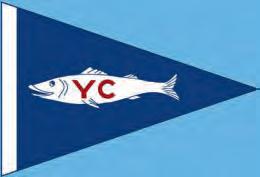

Now, the state and Crow Wing County each own parts of the three islands. A land transfer from the federal government to the state required it not to be logged or developed.
The joint powers board made up of representatives from Ideal Township, Crow Wing County and the DNR formed in 1990 to govern the islands.
The recreational area is named for the late Rollie Johnson, a resort owner who was instrumental in taking care of the islands in the 1980s and early 1990s, up until the joint powers board was formed.
In the last 20 years, the board became more aggressive in its efforts to maintain the islands.
Literature says: “Big Island is a rare surviving example of an undisturbed oldgrowth maple-basswood forest. Trees 150 years old tower up to 100 feet above the forest floor, sheltering a rich assortment of flowering plants unusual this far north in MInnesota. The butternut tree found here is the north-westerly-most record for this species.”
Nancy Vogt is editor of the Pineandlakes Echo Journal weekly newspaper in Pequot Lakes/Pine River. She may be reached at 218-855-5877 or nancy.vogt@pineandlakes.com.

An architectural rendering of the National Loon Center campus shows the loon center at center, which will be built between County State Aid Highway 3 and Swann Drive in Crosslake, between Reed’s Market and the CSAH 66 business strip. For reference, from top left is the business strip from Andy’s Bar & Grill to Pine Peaks. Contributed
The National Loon Center has been an important part of the fabric of Crosslake since its founding in 2017. It is a destination for study and education on loons and their habitats, as well as freshwater conservation.
The NLC has been in its current location at Crosslake Town Square since 2021, thanks to a donation from Crosswoods Development. Now the center is looking to make a big step forward by building a standalone campus.
National Loon Center Executive Director Jon Mobeck said they hope to break ground on the new facility in July 2024, and are waiting on funding from the 2024 state bonding bill.
“We’re aiming for July at this point,” Mobeck said. “It does feel like the trade winds are blowing in our favor on that. If (the funding) is successful, then we will transition right into breaking ground.”
The National Loon Center originally began as an idea to improve the city and community of Crosslake, but it quickly became something much bigger over its short history.
The idea for the center first came out of a group of about 80 community participants organized by the Minnesota Design Team in 2016 to generate concepts for improving the Crosslake area.
“From that, they came up with all kinds of great ideas of different things to do. Many of them have come to fruition, but one of them was this wild idea to create a national center,” Mobeck said.
Being so closely tied to community improvement, the NLC has received a great deal of local support over the past years.
“I can say right away because of that, the Brainerd Lakes Chamber of Commerce became the biggest advocate. And they really helped to get (the center) where it is today,” he said.
Mobeck started with the National Loon Center in January 2021, the same year it moved into The Nest, its current location in Crosslake Town Square.
The National Loon Center and its programs
With the Nation Loon Center being located in the heart of lake country, it is focused on research and education regarding both
loons and freshwater conservation.
“Our goal is to protect loons and freshwater habitats, and to both promote responsible recreation and encourage people to take action in protecting loons and freshwater ecosystems. So we’re trying to engender stewardship among people who love the loon and extend that love to preserving the freshwater ecosystems that are dwindling around the planet,” Mobeck said.
In its ongoing work, the National Loon Center collaborates with the University of Minnesota, the Minnesota Department of Natural Resources, the Minnesota Pollution Control Agency, the Northern Waters Land Trust and the Leech Lake Band of Ojibwe.
From its 2021-2023 operating seasons, the National Loon Center has seen 167 loons banded and 132 loon territories studied.
Among its educational programs is the Share Our Shoreline program, which

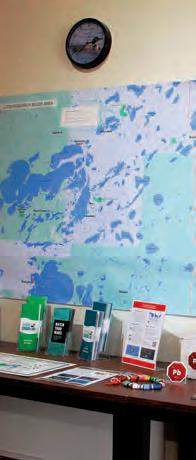


emphasizes the need for the natural shoreline vegetation that is necessary for loon habitats and clean lake water.
The NLC also hopes to teach visitors about the dangers associated with using lead tackle, as one in five loon deaths is due to lead
The loon center is able to bring visitors onto the lake with its StewardShip floating classroom. With this, visitors can take guided pontoon tours of Cross Lake to learn about loons in their natural habitats.
Between 2021 and 2023, the StewardShip program brought 2,000 loon pontoon passengers onto Cross Lake.
For its 2024 season, the NLC plans to expand its StewardShip program to the Gull Chain of Lakes with pontoons at Cragun’s Resort in East Gull Lake. Also new for 2024 is the first Minnesota Loons and Lakes Festival in Crosslake from Thursday-Saturday, June 20-22. The festival will feature loon-centered arts and events throughout Crosslake.
The new campus
The International Wolf Center in Ely and the National Eagle Center in Wabasha have provided a blueprint for making the National Loon Center

One of the National Loon Center’s ongoing programs is to educate about the problems associated with using lead tackle for fishing, as shown in this display at The Nest at Crosslake Town Square. Tom Fraki / Echo Journal

campus a reality.
Based on figures gathered from the IWC and NEC, the National Loon Center is estimating its new facility could bring in up to 200,000 visitors annually, bringing a significant economic boost in tourism dollars to Minnesota and the Brainerd lakes area.
The National Loon Center campus will be located just west of Crosslake Town Square between Pioneer Drive and County State Aid Highway 66.
It will feature a 15,000-square-foot sustainable facility, including indoor and outdoor exhibits, a bird sanctuary, a research institute, a three-level ecosystem tower, classrooms and a portion of the property to be set aside as an untouched natural area with walkways.
The National Loon Center is working with Dimensional Innovations to create changing exhibits that look to bring visitors back more than once.
“It’s really, really cool stuff. So the interior experience will be first-class, really high-end. The purpose is to make sure there’s a heightened wow factor for anybody who enters the building, but also that there are enough

interesting and changing things to make people want to come back more than once,” Mobeck said.
The NLC was waiting on a $6.5 million bonding bill request from the state to reach the campus’ $18.5 million total project cost. Mobeck said the loon center is still fundraising for up to another $2 million to go toward future exhibits.
“I do want to encourage people to know that whether you’re an individual, a foundation or a corporation, there are opportunities to put their names behind these world-class exhibits. That would help us make sure that the exhibit experience is the best it can be,” he said.
For a project of its size, Mobeck said it has been great to see such wide support for the new loon center campus.
“It’s great to have the project be so widely supported, even in terms of socioeconomics and political backgrounds. Everybody loves the National Loon Center, we’ve got some great support,” he said.
TOM FRAKI is a staff writer for the Pineandlakes Echo Journal weekly newspaper in Pequot Lakes/Pine River. He may be reached at 218-855-5863 or tom.fraki@pineandlakes.com.



Location: Crow Wing County, 7 miles south of Crosslake Area: 922.03 acres
Deepest point: 56 feet
Shore length: 7.62 miles
Fish species: Black bullhead, black crappie, bluegill, brown bullhead, hybrid sunfish, largemouth bass, northern pike, pumpkinseed, rock bass, smallmouth bass, walleye, yellow bullhead, yellow perch, golden redhorse, white sucker, banded killifish, bigmouth shiner, blackchin shiner, blacknose shiner, bluntnose minnow, central mudminnow, golden shiner, Iowa darter, Johnny darter, mimic shiner, spotfin shiner, spottail shiner.
Invasive species: Zebra mussel
Public water access: A public water access is located on the south shore of the east basin of the lake.
Interesting fact: Formerly named Sandbar Lake, about 57% of Horseshoe Lake is 15 feet deep or less.
Sources include Minnesota Department of Natural Resources LakeFinder
Pequot Manufacturing 3457 Veterans St Jenkins, MN 218-568-8069 pequottool.com Lake Map Sponsored By:




Themed bars provide an opportunity to bring friends and neighbors together
 By Tom Fraki
By Tom Fraki
Tiki culture has had a grip on American fascination since the 1930s, focusing on island drinks, beach life and tropical themes of the Caribbean and South Pacific.
For several homeowners on Horseshoe Lake in Mission Township, the beachside tiki bar spirit has taken hold with many in their neighborhood building freestanding bars along the lake.
While not all of the neighborhood bars on Horseshoe Lake strictly follow a tropical theme, they all reflect the intersection of beach living and the sense of community present in the lakes area.
Eric Carder, who built his bar in 2016, was one of the first to build a neighborhood lakeside bar on Horseshoe. Carder said that for him, the idea came from wanting to have options outdoors when having people over.
“I kind of just came up with the idea that instead of everyone sitting around a fire pit, you could have a spot where you could watch a football game on a Sunday or a baseball game in the summer. And if you wanted to get out of the sun, you could do that,” he said.
Carder said his bar has more of a rustic theme, having built it out of reclaimed metal panels, a cedar deck and pavers.
Tom Laurence, another one of the lake’s earlier tiki bar adopters, also has one of Horseshoe Lake’s most mobile bars.
Built on a pontoon, Laurence said the idea for his bar came from seeing a photo of a similar bar taken by a friend’s parents.
“So I was like, ‘Wow, I can build one of those if I had a pontoon.’ So this neighbor of my mother- and father-in-law had an old pontoon sitting in the driveway that had been there for years. So I bought that from him and stripped it down to the platform and pontoons. I started from there, building it from the ground up from the pictures I’d seen, and built basically a floating tiki bar,” Laurence said.
“So that’s kind of how it all came to pass. And they’ve just been growing in popularity around the lake,” he said.
Dan Whirly may have one of the more elaborate bars on the lake. His bar, the “Surf and Swing,” features a tiki theme and hanging swings for the bar’s stools.
“The way I run mine is I have a stoplight on the dock. If the stoplight’s red, that means it’s family time, and don’t just swing in. If it’s green, swing on in and belly up if you want to,” Whirly said.
“Dan’s got a very nice setup over there with his swing bar, for sure,” Laurence said of Whirly’s bar.
Whirly said that after the COVID-19 pandemic, people in the neighborhood were


looking for different ways to get together and that’s when the trend really took off.
“I think COVID really sparked that need for people to get together. We started to see a lot more of them as peo-

ple were looking for alternatives to get together outside,” he said.
Joe Butorac said his bar, the “But-y Bar,” was originally modeled after a friend’s bar on a nearby lake. As a way of keeping a history of who stops by, Butorac puts up photos in the bar of people who visit.
“We wanted to have that option for neighbors who want to stop by. It’s a really good gathering place,” Butorac said.

Erik Lee, whose bar is named “Lee-sure Time,” said the bar trend with homeowners on the lake is much less about partying and more so another way for neighbors to reach out and get together.

Everyone comes over and everyone’s welcome whenever, wherever you’re at on the lake.
- Erik Lee

“It’s just kind of a fun, social lake. Getting together with everyone on the lake and getting to know everyone, it’s a whole lot of fun. That is probably the best part. Everyone comes over and everyone’s welcome whenever, wherever you’re at on the lake,” Lee said.
Laurence said having the tiki bar trend has given people around the lake another way to connect and has brought the neighborhood closer together.
“It’s that camaraderie and being able


to bring people together. Horseshoe Lake has got a really, really good group of people who live around it. It’s really gotten to be a lot like a big family,” he said.
TOM FRAKI is a staff writer for the Pineandlakes Echo Journal weekly newspaper in Pequot Lakes/ Pine River. He may be reached at 218-855-5863 or tom.fraki@pineandlakes.com.





Location: Cass County, west of Hackensack
Area: 1,267.2 acres
Deepest point: 45 feet
Shore length: 15.28 miles
Fish species: Expect to find a variety of fish including black bullhead, black crappie, bluegill, bowfin, brown bullhead, largemouth bass, northern pike, pumpkinseed, rock bass, walleye, yellow bullhead and yellow perch in Birch Lake.
Public water access: There is a city-owned public access on the east shore in Hackensack.
Interesting fact: Since 1950, the shore of Birch Lake has been home to Paul Bunyan’s wife, Lucette Diana Kensack, a 17-foot tall wood and fiberglass statue. In 1990, strong winds battered the original and decapitated the structure, resulting in repairs over the years until the current Lucette was built with a much smaller Paul Jr., the offspring of the legendary Minnesota giants.
Sources include Minnesota Department of Natural Resources LakeFinder









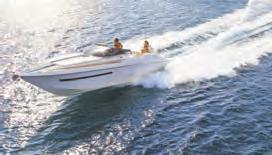

 By Travis Grimler
By Travis Grimler
Marking 27 years in 2024, Hackensack just wouldn’t be the same without the weekly Children’s Fishing Contest on Tuesdays on Birch Lake.
The tradition has surpassed its founder, Bob Kennedy, who died in 2013, 16 years after co-founding the event. Kennedy’s son, Bill, took over the contest after his father’s death with no signs of stopping.
The only year without the weekly contest was 2020 during the COVID-19 pandemic.
“We couldn’t even congregate outside five feet from everyone,” Kennedy said. “Other than that, there’s been a contest every year.”
Kennedy said it’s basically an icon of the city of Hackensack, like the Longville Turtle Races or the former Pine River Duck Races.

to Approval


The Hackensack park and pier are jampacked whenever the Hackensack Children’s Fishing Contest comes to town on Tuesdays through summer. Contributed


“The contest is a staple of Hackensack,” Kennedy said. “The town has an identity and part of Hackensack is the fishing contest. People look forward to it every year.”
It’s also proven a popular way to draw people to town and get children interested in the outdoors.
“We just want families outdoors and having fun,” Kennedy said.
That is what the contest is all about — giv -
because they needed volume. His buddies were all avid sportsmen and fishermen, so they decided to make up this fishing contest.”
The first one was not very successful.
“They put out the flier and got the word out and nobody showed up,” Kennedy said. “That’s when they realized school was still in session.”
After a little regrouping and replanning, they tried again to much better success. The contest started out very small.
 - Bill Kennedy
- Bill Kennedy

ing children in Hackensack something productive to do in the summer.
“Dad and his buddies were all sitting around at the Legion talking about how there didn’t seem to be very much for the kids in Hackensack to do during the summer,” Kennedy said. “We aren’t big enough to have a Little League or organized sports. They’d normally have to go to Walker and join there

“From then on, it was a success,” Kennedy said. “And it just kept growing.”
Since then, the event has grown. The event regularly attracts up to 220 anglers and over 400 others, and all that bait and those hot dogs come with a cost. Luckily, businesses from Hackensack and abroad are as determined as Kennedy to keep the program running.










“My dad always got donations from the VA Hospital in Fargo, because he’s a vet,” Kennedy said. “He had a lot of contacts in Fargo, one of them being Scheels, specifically in Fargo because they can all do their own donations.”
In spite of that, participating families are not bombarded with a lot of advertisements at the event, as only one sponsor is advertised at the pier each week, often a local church or organization.
“They are invited that Tuesday to promote their business, church or whatever,” Kennedy said. “Many of them find it very fun to come and do that and they wear their logos and bring business cards. It’s the only advertising that’s allowed.”
The contest is a great option for almost any family. There is bait, some loaner fishing rods, free hot dogs and, of course, prizes.
“Hot dogs are sponsored, so they’re free,” Kennedy said. “Coffee is free. Then, as prizes, everyone gets a goodie bag with candy and a ticket, and they get a coupon book.”
Each week there are lots of prizes to go around, but only for the children, including a grand prize ticket drawing for a large tackle box with tackle. There are three age categories: 0-5, 6-9 and 10-15.
There are events that don’t require dipping a line in the water.
“Anyone can participate in the minnow race one time each week,” Kennedy said. “That gets a tackle box with some tackle.




Contributed photos
Left: There are four prizes awarded to three different age groups every week during the Hackensack Children’s Fishing Contest.
Above: Free hot dogs have been a constant at the Hackensack Children’s Fishing Contest. They are paid for by sponsors.



And then we have a casting contest, which is a bit harder.”
There are four prizes in each age category — for the first fish, smallest fish, biggest fish and most fish caught. The smallest fish is good for a shirt that reads “I caught the smallest fish in Hackensack at the Hackensack Children’s Fishing Contest.”
The angler who catches the first fish gets a free piece of tackle from a grab bag. The child who catches the most fish wins a tackle box with tackle. The angler with the largest fish wins a rod and reel.
Of course, part of the fun of the event is coming together at the city’s fishing pier, which Kennedy helped to have renovated with state-of-the-art materials around 2016.
They raised approximately $80,000 to renovate the deteriorating retaining walls around the park and pier space with materials that should last for more than 50 years.
Donations came from all over, but they also received funding from a charity concert, the Hackensack American Legion and Hackensack American Legion Auxiliary. They also got a huge boost from a little-used Cass County fund.
They also renovated the old hot dog shack at the pier and made general improvements.

meetsgreattaste!ThisiswherepassionWhenserving upthebestisyourpassion,youinsist onthebestbeef.Youknowthereis nocuttingcornersonquality, becausetheproofisalwaysgoingto beontheplate. That’sexactlywhyweinsistononly thehighestquality,vettedbyour strictChairman’sReserve®Certified PremiumBeefcertificationprocess. Welookatmarbling,gradingandthe maturityofourcattle,alltomake sureyouhaveadeliciousmeal— becausewhenyouhaveapassionfor greatbeef,nothingelsewillsuffice.
Overall, the program is a huge draw for the city. Of course there are locals, but in the height of the summer, anglers come from all over the world.
“We’ve had Japan and Australia,” Kennedy said. “You don’t get much farther than that.”
The fishing contest provides a limited number of rods and reels to participants who cannot bring their own, as well as personal flotation devices, which are required for participating anglers.
Going into the 27th year, Kennedy said there isn’t much to change about the program. They may look into building new storage for spare rods, life jackets and more equipment, but the contest is otherwise a fairly smooth operation.
“I don’t know what you would add to it,” Kennedy said. “I thought about it before, but without adding overhead or too much work for anyone, I don’t know what we would add.”
Now that the pier is in ship shape, what more could they ask for? As they say, “If it ain’t broke, don’t fix it.”
TRAVIS GRIMLER is a staff writer for the Pineandlakes Echo Journal weekly newspaper in Pequot Lakes/Pine River. He may be reached at 218-855-5853 or travis. grimler@pineandlakes.com.



Location: The Gull River flows south through Cass and Crow Wing counties into the Crow Wing River southeast of Sylvan Lake.
Length: 14.2 miles
Deepest point: At least 15 feet
Fish species: As a tributary to Sylvan Lake, the Gull River may have the same species of fish, including: black bullhead, black crappie, bluegill, brown bullhead, burbot, crappie, hybrid sunfish, largemouth bass, northern pike, pumpkinseed, rock bass, smallmouth bass, walleye, yellow bullhead, yellow perch, bowfin (dogfish), common carp, golden redhorse, greater redhorse, shorthead redhorse, silver redhorse, white sucker, banded killifish, blacknose shiner, central mudminnow, common shiner, golden shiner.
Public access: At the Gull Dam Recreation Area on the southeast side of Gull Lake.
Interesting fact: The Gull River is a tributary to the Crow Wing River and part of the Mississippi River drainage basin. For kayaks and canoes, it is approximately 20 miles from the Crow Wing River to the Mississippi River at Crow Wing State Park.
Source: Minnesota Department of Natural Resources, USGS 1974 Hydrologic Unit Map and the Brainerd Dispatch

Flourishing town vanishes after a decade when sawmill movesBy Frank Lee

People pose for a group photo in front of the Gull River Lumber Co. office in this photo circa 1882. Contributed / Crow Wing County Historical Society

A decade after the city of Brainerd was founded, Gull River Village sprang into existence around the activities of the Gull River Lumber Co.
The Chase, Pillsbury & Co. was formed in 1879 as a partnership between Jonathon Chase, George A. Pillsbury, Gov. John Pillsbury, Charles Pillsbury, August Horr and R.C. Leavitt.
“The first name of the company was Chase, Pillsbury & Co. … and later that fall they started building the sawmill for the first time,” said Jeremy Jackson, a historian. “By the next year, they had over 150 people living at Gull River.”
The sawmill was projected to cost about $125,000 and envisioned to occupy several acres of land and have a boom large
enough to hold 50 million feet of logs, according to the Minneapolis Daily Tribune.
“A sawmill costing $125,000, as a matter of course, will have a capacity to turn out an immense amount of material. A booming capacity for 50,000,000 feet is a matter not to be winked at,” according to the Jan. 21, 1882, edition of the Brainerd Tribune.
A historic building still sits on the banks of the Gull River along Highway 210 west of Brainerd.

Gull River Village was dealt a death blow when the entire sawmill and most of the village buildings and residents were relocated to northeast Brainerd in mid1892, to take advantage of the millpond created by the Charles Kindred dam recently completed in Brainerd.
- JeremyJackson

Floor Coverings • Window Treatments • Wallpaper • Fabrics Cabinetry • Countertops and Arlean’s Drapery
Office: 218.692.4521
Cell: 218.820.3800
Email: jgowen19@hotmail.com
Web: jaginteriorsolutions.net


Construction of the sawmill at the junction of the Gull River and the Northern Pacific Railroad began in 1879, according to a presentation by Jackson in 2022.
The steam-powered two-story sawmill was 154 feet in length and 60 feet wide, and produced product that was loaded daily into anywhere from seven to 11 railcars headed for the Northwest.
“The mill was erected during the fall and winter of 1879 and ‘80, and commenced operations about May 20th, 1880, with a stock of 13,500,000 feet of logs on hand, which will be manufactured into lumber during the present sawing season,” according to the Sept. 11, 1880, edition of the Brainerd Tribune.
“Last fall, a structure was erected and completed to be used as a boarding house commodious enough to accommodate board and lodging for 80 men, and this spring and summer, 22 dwelling houses have been erected on the townsite.”
A company-controlled general store furnished the employees and their families with all the necessities in the way of merchandise, according to the newspaper account.
“The primary markets for Gull River lumber was really everything west of here — western Minnesota, North Dakota and Montana,” Jackson said. “There were known distribution yards that I found in newspapers in Wahpeton, Bismarck and Sanborn (in North Dakota).”
The sawmill was in operation in the spring of 1880, and Gull River Village, a town that later grew to more than 300 inhabitants, sprang into existence within a year. The lumber company was located at the Highway 210 bridge west of Baxter.
“I’m certain my wife, some of her family members, were there. A lot of farmers worked there early in the spring sawing lumber. They come from Crow Wing, from Motley, from south of Brainerd,” Jackson said.
Jackson wrote about the lumber company, “An isolated narrow gauge logging railroad,


the Gull Lake & Northern Railway, was constructed in 1889 to transport and dump logs into one of the Gull Lake chain of lakes, which were then floated down the Gull River to the sawmill.”
Gull River Village flourished in the 1880s with more than 400 residents, according to Jackson, but the entire village had vanished by 1893 after the sawmill was relocated to northeast Brainerd a year earlier.
“Gull River Village was dealt a death blow when the entire sawmill and most of the village buildings and residents were relocated to northeast Brainerd in mid-1892, to take advantage of the millpond created by the Charles Kindred dam recently completed in Brainerd,” Jackson said.
Many of the homes along Rice Lake are built on the old sawdust pile, according to Jackson.
“The millpond was named Rice Lake upon its formation,” he said.
FRANK LEE wrote this story in February 2022 as a reporter for the Brainerd Dispatch. He is now a reporter for the Wadena Pioneer Journal.



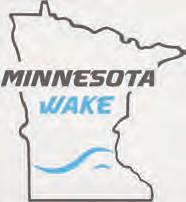







 An image of the former Gull River Village settlement looking west from the east side of Gull River with dwellings to the left, the sawmill and lumberyard in the center and a prominent boarding house to the right. Contributed / Crow Wing County Historical Society
An image of the former Gull River Village settlement looking west from the east side of Gull River with dwellings to the left, the sawmill and lumberyard in the center and a prominent boarding house to the right. Contributed / Crow Wing County Historical Society




 By Mike Rahn
By Mike Rahn
When we think of history-making weather, we’re likely to think of epic events: of blizzards, floods, tornadoes, hurricanes, cyclones; of dramatic rescues, disaster declarations, bold and all-caps newspaper headlines, or program interruptions for TV “breaking news.”
But history-making weather can also be about what doesn’t happen, especially when the past has told us that it should.
Before the arrival of widespread snow over much of Minnesota in the week leading up to Easter 2024, many were calling the winter of 2023-24 “the winter that wasn’t.”
And, despite the fact that this pre-Easter event dropped up to a foot of snow in some areas — snow that melted quickly with warm temperatures and April’s powerful sunlight — that “winter that wasn’t” label is still close to the truth.
From November 2023 through late March 2024, Minnesotans saw little snow and predominantly bare ground, the opposite of normal. We experienced record stretches of warm temperatures rather than our customary cold.
Rain fell instead of snow. Many lakes had ice conditions that were uncertain at best, dangerous at worst. This spring, many new records were set for early ice-outs on Minnesota lakes.
When our most recent winter is measured against history and generations-old Minnesota winter lore, it does not measure up.
Some are OK with that. During a more typical December to April, “winter haters” find themselves asking, “Why do I live here, anyway?” They prefer little or no snow, temperatures that are balmy for winter, and an early ice-out so they can get their boats back in the water as soon as possible.
Others embrace winter and look forward to the seasonal variety and recreational pursuits that depend on more typical weather. They look forward to winter’s hardy birds visiting their feeders, to stepping into cross-country skis or snowshoes for a glide or a hike, taking trail rides on a snowmobile or dropping a baited hook through the ice to walleyes or crappies suspended beneath the surface of a frozen lake.
Beyond the spectrum of our personal reactions to the changing seasons, scientists have additional perspectives. They also ponder the potential effects that changing seasonal weather patterns may have on our natural world.
In particular, the potential consequences in places that historically have had Minnesota-like climates. Some of these potential changes may be unwelcome.
It’s not about political debates over whether “climate change” is real, or about whether observed changes are caused by human activities.
It’s about measurable variations that are being recorded by scientists: thermometers recording temperatures, rain gauges measuring rainfall, depth measurements recording changing amounts of snowfall, and marking calendars with ice-on and ice-out dates.
The temperature and precipitation patterns of the fall-to-winter-to-spring cycle have survival consequences for plants and animals, from the tiniest plankton deep in a lake, to the most massive moose in a northern Minnesota boreal forest.
Each creature responds to the forces in its environment, whether they are climate-driven forces — like temperature and precipitation — or impacts from other living things that share their environment.
Together, they’re nature’s orchestra, each living component interacting with others to create harmony. If one element is changed, it will likely have an impact on the rest, just as would be the result if a composer changed the notes played by an orchestra’s violin section, or its cellists.


food and poor walleye fry survival.
Each time this happens, the stage is set for a poor walleye year class and fewer catchable-size walleyes for anglers.
Not only are lake ice-out dates trending earlier, but wide variation from one year to the next has become more common, too.
For instance, on a number of central Minnesota lakes there was roughly a sixweek difference in ice-outs between spring 2023 — happening near the end of April — and spring 2024, when ice-out generally occurred in mid-March.
As should be obvious, such variations are a result of major variability in winter temperatures.
Impacts on walleye survival are not the only consequences of the milder winters that are becoming more and more common.
Beyond the spectrum of our personal reactions to the changing seasons, scientists have additional perspectives. They also ponder the potential effects that changing seasonal weather patterns may have on our natural world.
The result will be something other than the original. We might like the result. Or we might not.
Although no winter is an exact carbon copy of another, variations from one winter to the next — especially variations that are extreme — can disrupt nature’s harmonies. Some we might not notice. Others will hit close to home and may be all too evident.
Impacts on walleyes
One of these disruptions — based on research by the University of Wisconsin — is a mismatch in the timing of our northern lakes’ ice-outs and the spawning of walleyes, the game fish that is odds-on the most sought-after here in Minnesota.
The study found that in years of early iceout, foods that newly hatched walleye fry rely on may have already passed their peak abundance. This can contribute to high mortality of these just-born walleyes, and thus to diminished numbers when that year’s class reaches catchable size.
Walleye fry are only about one-fourth of an inch long when born and live on their yolk
sac for five to eight days, after which they must find suitable size food to survive. When a lake’s ice-out happens at what might be considered the normal or optimum time, it is followed soon after by a bloom of phytoplankton, microscopic plant life.
Then the lake’s zooplankton — microscopic animal life — feed on the phytoplankton. Walleye fry, their yolk sac now consumed, begin feeding on the zooplankton as their first real meals.
That’s how it should happen. But University of Wisconsin researchers are finding that walleye spawning is not as responsive to early or variable ice-out dates as is their primary early food source, the plankton.
Researchers have found that while lakes are thawing earlier, the timing of walleye spawning may not be advancing as much as ice-out dates.
Plankton seem to respond more easily to variable ice-out dates. This can mean that by the time the walleyes spawn, the greatest abundance of phytoplankton and zooplankton may be past, resulting in a shortage of
Shorter, warmer winters provide a survival advantage to some insects that are harmful to Minnesota forests. One of these is the emerald ash borer, a tiny, iridescent green insect whose immature larvae feed beneath the bark of ash trees, severing the vein-like channels by which the trees’ roots feed the rest of the tree, eventually killing it.
Green and black ash combine to be the most abundant tree in Minnesota, and their loss would dramatically alter Minnesota’s forests and even urban landscapes.
The graceful, showy tamarack is not nearly as widely distributed or abundant in Minnesota as the ash, but is admired for the lustrous, golden tones its needles acquire before they drop in late fall. A member of the larch family, Minnesota’s tamaracks are under attack from the eastern larch beetle, which has been surviving in greater numbers due to recent milder winters.
Warmer winters and earlier spring-like weather are leading to an earlier onset of sap running in maple trees. One maple syrup processor reported that to accommodate the variability of temperatures from one winter to the next, he has to be prepared to begin tapping trees as much as six weeks earlier than his grandfather typically did.
Ticks, those tiny, blood-sucking critters that bedevil humans, our dogs and wild creatures alike, are active later in the fall and earlier in spring when winters are mild, as our most

recent one has been.
Not only do they then have more opportunity to be a nuisance — and potentially infect us with such maladies as Lyme disease and anaplasmosis — but ticks when overabundant can harm native wildlife.
This includes wildlife as large and robust as moose. Ticks burrow under the moose’s dense fur, where it’s warm enough for them to survive and where they can feed on the moose throughout the winter.
In a normal winter with good snow cover, many of the eggs that will be shed by these ticks in spring will die. But when there is little snow cover, egg survival is high. This contributes to major tick outbreaks, which — through loss of blood and vital nutrients — can weaken and kill significant numbers of moose, especially their calves.
Some creatures, however, actually benefit from warmer winters with little snow cover. One of these is the whitetail deer. Deep snow can hamper deer movement and can eventually reduce their feeding options; this negative effect is compounded by energy-draining, subzero temperatures.
Winters like our most recent one, with little snow and warmer temperatures, are ideal for optimum deer survival.
The same can be said for farmland pheasants, which are primarily ground feeders. They can suffer significant winter mortality when snow comes early, lies deep on fields and in the cattail marshes that provide security cover, and remains well into spring.
On the other hand, Minnesota’s other popular game bird — the ruffed grouse — actually does better during winters with abundant snowfall.
One of their evolutionary adaptations is to burrow down into deep, soft snow, emerging only to feed — typically early and late in the day. While such predators as the fox might occasionally capture a grouse in these underground hideaways, grouse are essentially safe there from such avian predators as hawks or owls.
Conserving body heat in their insulated shelter, their need to feed and expose themselves to predators is also reduced, enhancing their odds of surviving the winter to breed in spring.
A mild winter such as this one, while perhaps making lower energy demands on all wildlife, can prevent grouse from optimally benefitting from their remarkable snow-roosting survival adaptation.
Earlier ice-out on lakes and wetlands can accelerate the northward migration of ducks,
Despite a mild 2023-2024 winter, a group of ice anglers were able to venture to Lake Winnibigoshish. Nancy Vogt / Echo Journal

geese and other waterfowl, giving them an earlier start to nesting and rearing their young. This can be beneficial when a nest is destroyed by a predator, such as a skunk, fox or mink, giving the birds more time for a re-nesting attempt to be successful.
Not to be overlooked are the consequences of a shortened winter and an early spring for anglers. While the general fishing opener in May is unlikely to be advanced to an
earlier date anytime soon, the most eager anglers are on the water in pursuit of crappies almost as soon as ice-out permits. They, too, are among the creatures affected by the seemingly greater unpredictability of our weather.
MIKE RAHN, Brainerd lakes area resident, writes Inside the Outdoors, an outdoors column published in area publications and on their websites, including the Pineandlakes Echo Journal and its website, www.pineandlakes.com.


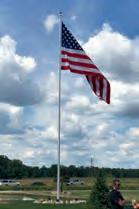
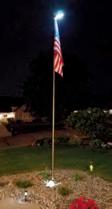
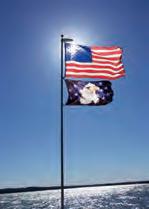






Location: Cass and Crow Wing counties
Area: 9,947 acres
Deepest point: 80 feet, 30 percent of the lake is 15 feet deep or less
Homes per shoreline: 27.8
Defining characteristics: The Gull Chain of Lakes, for which Gull Lake is the namesake and largest member, is a collection of a number of connected lakes and two bays: Gull Lake, Upper Gull Lake, Nisswa Lake, Roy Lake, Margaret Lake, Spider Lake, Spring Lake, Love Lake, Round Lake, Bass Lake, Steamboat Bay, Wilson’s Bay.
The chain collectively covers 13,000 acres and its shores host over 2,500 homes. The chain spans across Cass County, MN and Crow Wing County, MN.
Water quality: Mesotrophic - clear water with occasional algal blooms in late summer.
Number of aquatic plant species: Over 35 species
Invasive species: Zebra mussels
Fish: Panfish, largemouth & rock bass, northern pike, walleye, bluegill, crappie, tullibee, yellow perch
Public accesses: East shore off County Road 115; north end of Boomingout Bay near Upper Gull Lake; off County Road 70 near dam; on northwest side off County State Aid Highway 77.
Interesting fact: The Gull Chain of Lakes Association reports on its website that the chain consists of 8 lakes and connecting channels covering 13,000 acres. There are over 2,500 homes on the chain that are both year-round and seasonal. The Gull Lake Chain Association was formed in 1969.
Sources: Minnesota Department of Natural Resources, minnesotalakes.net and Wikipedia
Lake Map Sponsored By:
Shannon’s Auto Body
124 8th Ave NE, Brainerd, MN
218-829-6764
shannonsautobody.com
FOR



Kathy and Mike Ruhland bought and refurbished an old pontoon boat — the Rainbow Bay Fun Ship — that matches the history of the resort property they renovated to host family and friends.
Contributed / Mike Ruhland


In a time when small, mom-andpop resorts continue to shutter their doors after hosting generations of families for decades, one such resort on Lake Margaret gained a new, albeit a different, life.
Rainbow Bay Resort closed in 2017 after longtime owner Roger Reynolds died in his 90s. His wife, Helen, had died nearly a decade earlier.
Along came Mike and Kathy Ruhland, of Minneapolis, who purchased the run-down property in 2018 with an eye to the past.
Rather than tear down buildings and build a new home, they decided to restore the resort to its early years to host family and friends. They do not operate the resort as a business.

The history just keeps coming out, whether we’re finding things on the property or people are stopping by telling their stories
-Mike Ruhland

“They didn’t have any children, so the property went into an estate,” Mike Ruhland said of Roger and Helen Reynolds. “They pretty much cleaned out the main house, but everything else was as is — all the cabins and the old bar, which was also the check-in building. Everything was still jampacked with 1950s, ‘60s, ‘70s stuff.
“We knew we were taking on quite a challenge, but we were eager to rescue this property,” he said.
Kathy had grown up visiting Samara Point Resort on Gull Lake with her family. Her parents, Tom and Connie Smith, of Rochester, Minnesota, later purchased a place at Causeway on Gull before then buying a cabin on Lake Margaret more than 30 years ago.
“As the family grew, we decided to start looking at property in the Gull Lake area,” Mike said.
That’s when they found Rainbow Bay Resort across the lake from the cabin.
When the Ruhlands first saw the property from the lake, the grounds were so overgrown they could hardly see the cabins, and the buildings had peeling paint.
But they could see it was an amazing property. Kathy loves architecture and design and could envision restoring the cabins and bar.
“My wife had a vision, and once it was redone and the bar was rebuilt, we brought
it back to its glory days of yesteryear,” Mike said. “We worked with John Dotty and Dotty Brothers Construction on the remodel.
“Our vision was to bring the mom-andpop resort back to life,” he said.
As the remodel unfolded, Mike became interested in incorporating the resort’s history.
“There were so many memories I’m sure that people had since the 1940s on that property,” he said. “To take everything down and build something new, you lose all that history, and that’s something we wanted to preserve.
“It has been so much fun to learn about the history, the Rainbow Bay guests and all the fun that took place at the resort,” he said.
As an example, he said a former owner’s son, Johnny Palmer, recently dropped off an old movie showing a water ski show, “Ski Antics,” that took place in the ‘50s at Rainbow Bay.
Roger and Helen Reynolds bought the small Rainbow Bay Resort in 1960 from John Palmer for $20,000, according to an August 1984 Brainerd Dispatch story. The resort had five cabins, and 16 years later they added six more cabins after buying neighboring resort Hallett’s Hideaway.
Through the years, the couple saw six of eight resorts on Lake Margaret close.
The Ruhlands’ property is actually where Myrt & Art’s Hideaway Resort, and later Hallett’s Hideaway, were once located.
“The property next to us was the original
Rainbow Bay Resort in the 1940s,” Mike said.
He has a guestbook from 1945-48 that has 67 pages with more than 480 signatures from guests staying at Myrt & Art’s Hideaway or from patrons of their bar. He’s taken on a project to learn more about the guests represented by those signatures.
“Today over 125 signatures have been identified and displayed in this book, giving historical LIFE to a small resort and bar on Lake Marga ret in the 1940s!” he wrote as part of the project.
Myrt and Art Anderson, who built the Hideaway Bar, sold that resort to the Halletts in 1948. It was Hallett’s Hideaway until 1976, when Roger and Helen Reynolds bought it and turned the whole property into Rainbow Bay Resort, which operated until 2000.
Helen had multiple sclerosis, and Roger couldn’t handle the big property on his own so he had his good friends, Glen and Sandy Cook along with Gary and Geri Cook, help finance and manage half of the property, which was renamed Rainbow Cottages.



Roger died in 2017, and the Ruhlands purchased Roger’s Rainbow Bay Resort in 2018. Vacationers who had already booked 2018 vacations, before Roger died, were allowed to stay at neighboring Rainbow Cottages that next summer.
“These mom and pops, as you know — they’re a little short on amenities but the guests that have been coming there for 20 years keep coming back,” Mike said. Keeping the unique property
Even before the thought of preserving history, the Ruhlands saw an opportunity to have a property that could accommodate a lot of guests and their growing family, with Kathy’s parents just across the lake.
“This was another spot where people could stay because our family continues to grow,” Mike said. “We can sleep 28 on the property and so we just have a lot of room for people to check out their own cabin for the weekend or however long they’re going to stay.”
Mike and Kathy loved the clubhouse space created in the bar, where both kids and adults

can listen to music, dance, play games and have family dinners.
It was a lot of work to fix it up, but they saw the opportunities. It took five years to clean up the grounds, rebuild a cabin and the clubhouse bar, and remodel other cabins.
There are three cabins on the lake side and two more on the other side of the road that were used for storage. One of these cabins has since been donated to a veteran in need of housing through the Minnesota Veterans Project.
Throughout the process the Ruhlands found a lot of treasures.
“We are so thankful that nothing was emptied out. It’s a nightmare, but there’s so many finds that we’ve had as we go through these cabins and outbuildings — just the super cool, old, historical stuff that we’ve been able to repurpose,” Mike said.
He loves what he calls “the bottle graveyard,” where bottles and cans were dumped in the days before garbage pickup and recycling.
They have a glass case in the clubhouse bar, where resort guests once checked in, that displays historical items found on the property.
The resort walkways were so overgrown that no one knew they were lined with stone

Bedrooms in the three waterfront cabins feature matching colored decor and custom-made fireplaces.



until Mike started digging. He was later told that Art Anderson loved working with rocks.
Mike has received historical items and photos from descendants of the previous resort owners, and he’s learned about the property from people who once stayed there.
“The history just keeps coming out, whether we’re finding things on the property or people are stopping by telling their stories,” Mike said.
That’s why Mike and Kathy are happy they kept the property’s history in mind.

The Hideaway Clubhouse/Bar entry features a display case where resort guests would check in that’s now filled with old items and photos from the resort, including Roger Reynolds’ coat and gloves found in the coat pockets at far left.

Maybe we’re sentimental, but we feel there’s an obligation to the guests.”
Mike said he feels an obligation to preserve the history of the past resort owners

they were able to open the bar’s old cash register. They later found the cash register, plugged it in and it started humming.
The register worked as Mike plugged in numbers and they added up correctly. He couldn’t find a “total” button to open the register so he kept hitting buttons until the register finally opened.
It has been so much fun to learn about the history, the Rainbow Bay guests and all the fun that took place at the resort
-Mike Ruhland

The Ruhlands share Roger’s sentiments that he voiced in the 1984 Dispatch story:
“Me and Helen aren’t here for the business or money but for the way of life. …

who spent so many years dedicated to their guests and friends, like Roger’s obligation to his guests.
Mike shared an ironic story. When they closed on the property, they were asked if



He found $7.22. He took the money out, closed the drawer, and the machine died.
“Right then we felt Roger knew what we were going to do with this property before we knew, and he wanted us to open the register,” Mike said.
That $7 and odd change is now in one of Roger’s little glass cups on a shelf in the bar, never to be touched.
“I feel that that is Roger’s money. It’s up on the bar and it’s for no one else to take. A great remembrance of good times at Rainbow Bay,” Mike said.
It has been an exciting journey discovering and preserving the past, and the Ruhlands look forward to creating their own history for their future generations to discover.
Nancy Vogt is editor of the Pineandlakes Echo Journal weekly newspaper in Pequot Lakes/Pine River. She may be reached at 218-855-5877 or nancy.vogt@pineandlakes.com.

Rockhounds hope Minnesota laws will some day allow collection
By Travis GrimlerAsk rockhounds what they know about Minnesota and they will more than likely mention Lake Superior agate.
A few who are familiar with the rarer finds along the shore of Lake Superior in Duluth might talk about Thomsonite and Petoskey stones, Yooperlites or some of the other rarer types. But most will come back to Lake Superior agate, the state stone.
There is, however, a stone far rarer and found only in one place — the Cuyuna Iron Range.
From 1911 until 1984, the Cuyuna Iron Range was a massive iron mining operation, famous across the nation.
As with other mining operations, the job was made possible by digging through layer after layer of soil and stone to reach the many hundreds of years of material deposited and eventually developed by pressure, chemical processes and age into different layers.
Miners were obviously after iron ore, but to get it, they had to remove mountainous piles of unwanted material called tailings. And this is how a mineral unique to the Cuyuna Iron Range came to the light of day.
Miners often come across other materials during their work. Some might find materials as valuable, or more than what they are mining. Some find fossils, like in the Mesabi Iron Range.
In Cuyuna, it was a special combination of layered stone: quartz, siderite, iron, manganese, epidote and sometimes asbestos combining in thin, layered patterns to create a stone that caught the eyes of miners and those who simply liked picking through the tailings piles.
One such person was Bill Bingham, co-founder and first president of the Minnesota Mineral Club. While it is possible that many had already collected similar samples, Bingham was the first to publish an official description of the material in 1936.
For that, he earned the honor of lending the mineral its name — Binghamite.
“Mr. Bingham was the owner of one of the mines,” said Edward Opatz, president of the Cuyuna Rock, Gem and Mineral Society.
“He was a geologist, then he got into finding this stuff. He knew it wasn’t iron ore, but it was something that really caught his attention, and he had his own really big personal collection.”
The way the different minerals in binghamite lined up made it desirable to collectors even while the tailings were still piling up. Instead of quarter-inch thick layers like the banded iron, it formed almost fibrous crystal layers that reflect the sun in a way that isn’t common to many minerals.
This quality, called “chatoyancy” after the French phrase for “cat eye like,” is what makes tiger’s eye pretty. Found alongside Binghamite and possibly over lapping with categorization are two other stones, Minnesota tiger’s-eye and silkstone.

“It’s kind of like opal, where you look at it in different light and it shows you different colors and different variations,” Opatz said.
This large piece of Binghamite from Bill Trombley’s collection shows the variability of Binghamite in its fibrous crystal layers. Contributed / Bill Trombley


It’s a known fact that fencing increases security. It’s also known that fencing increases value.
For us at Oberg Fence, we look at fencing as functionality-driven and aesthetically pleasing.





“It’s unique just because of the heat and pressure when it was being made.”
After Bingham described the stone, it became collectible like Lake Superior agates. Rockhounds could be found picking through the piles of stone throughout the iron range looking for bucketloads of the material.
“Most of (Bingham’s collection) came off the tailings piles,” Opatz said. “They rejected those stones because there was no iron ore value to it. Most of the piles out in the state park had Binghamite in them. There’s probably some still down on the bottom of the lakes, but you’re not going to find them that easy.”

It was hard to come up with good quality Binghamite, because there wasn’t any more earth being moved.
- Bill Trombley

When the mining operations closed in 1984, Binghamite went from not only a collectible, but a stone with limited quantities.
“It was hard to come up with good quality Binghamite, because there wasn’t any more earth being moved,” said Bill Trombley, a rockhound. “The mines are all lakes, so you’re stuck with all the tailing piles.”
Without materials being removed and crushed for mining, the only stones that would be available were the ones already stacked in the Cuyuna area, and that attracted rockhounds from all over the state
“I belong to two different clubs in the area and I first started to learn about Binghamite and develop an interest in it,” Trombley said. “It was when we could do field trips there in Crosby back in the early ‘90s. When I got into it (the city) owned the Yawkey Mine just north of Crosby and you could pay a camping fee and we would take our kids up there and back to the old dump piles.”
Collection continued for nine years before a major change put an end to most recreational gathering of Binghamite. In 1993, the Cuyuna Country State Recreation Area was adopted into Minnesota Department of Natural Resources management, becoming a state park.
“The state park is off limits to collecting, because it’s a state park,” Opatz said.
With the designation came the rules that cover all state parks. Mushroom and berry collection is allowable, but no flowers, living plant material, artifacts or — most relevant, rocks — could be removed.
Binghamite hunting was outlawed throughout most of the traditional rockhounding locations.
“I ran into a DNR guy in Ironton right after they had purchased the Yawkey Mine from the city of Crosby,” Trombley said. “He told me he’d have me arrested if I ever picked up a rock there.”
There may be some exceptions for private land; however, there is little land that would be suitable for Binghamite collection, even if landowners are willing to offer permission.
“There are supposed to be some on private property,” Opatz said. “There are some on private property with tailings piles, but most of them are not really interested in letting people come on their property. Hopefully that will change someday.”
Still, the stones in old collections have become almost heirloom-like. Trombley once had an enormous collection, but it dwindled over time.
“I sold my smaller stuff and got rid of a lot of other stuff,” Trombley said. “Especially when I moved into a two-bedroom, twobath apartment. I found out I couldn’t keep 2,000 pounds of rocks over here so it’s been reduced.”
There was once an abundance of collectors who had likely accumulated large quantities of the materials. Many of those stones have since changed hands, even to the point that a great many polished Binghamite stones and mounted jewelry pieces can be found at RW Jewelers & Boutique in Nisswa.
Still, there is some hope that there eventually could be a way to open up Binghamite hunts in the recreation area with state permission.
“We’ve been talking to the state trying to get it available as a recreational hobby,” Opatz said. “That way they would let us have one little space where people could look for rocks and keep some of them.”
Some compare the compromise to fossil collecting on the Mesabi Range. The Hill Annex Mine on the Mesabi Range dug through a cretaceous rock layer and uncovered fossils from ocean creatures from when Minnesota was underwater.
Until recently, the park allowed those participating in park tours to not only see the tailings pile full of fossils, but to pick and keep them.
Hill Annex was different, however, as the
A pendant displaying the variation of Binghamite colors, including red, gray and white, can be found at RW Jewelers & Boutique in Nisswa.
TravisGrimler / Echo Journal

tailings pile for the fossil hunt was located on county property abutting the park.
Though it is not in the cards now, the rare Binghamite stones in Cuyuna could pose yet another draw to the retired mining area. Those who don’t want to visit for the miles and miles of intricate bike trails might instead want to hike the hills looking for rare stones, bringing even more tourists into the area.
Other states have developed successful programs that attract visitors for a chance to sift through dirt for rare stones. Crater of Diamonds State Park in Arkansas, for example, attracts over 100,000 paid visitors every year.

There is demand for the same type of attraction in the Cuyuna Range.
“Every year I get six to 10 people from out of state asking where they can collect Binghamite,” Opatz said. “I tell them sorry, because you can’t collect it because it’s in the state park.”
While there is no indication that any change is forthcoming, rockhounds can still hold out hope that someday they can find their own prized Binghamite.
TRAVIS GRIMLER is a staff writer for the Pineandlakes Echo Journal weekly newspaper in Pequot Lakes/Pine River. He may be reached at 218-855-5853 or travis. grimler@pineandlakes.com.









Ask Ray Nelson and he will tell you: There are layers of history in the soil everywhere you walk in Minnesota.
Hidden in the soil throughout the state, especially near certain bodies of water, are the remnants of human and animal habitats from many generations before.
Thanks to one amateur archaeologist named F.T. Gustavson, who became famous for his finds on Upper Hay Lake east of Jenkins, new information is still being uncovered about the residents of the Pequot Lakes and Jenkins area and how they interacted with the rest of the world.
Gustavson lived in the Pequot lakes area some time after 1906, during which time he frequently walked the shores of Upper Hay Lake, looking for ancient history uncovered by the waves.
Though his practices were not as precise or documented as one would hope for archaeological finds, an entire section of the Crow Wing County Historical Society museum in Brainerd is dedicated to the Native American artifacts he uncovered.
Most famous is the Poualack Pot, a St.

Contributed / Crow Wing County Historical Society museum F. T. Gustavson performed amateur archeology at Upper Hay Lake, uncovering countless artifacts, including a historically significant bowl and a mysterious rifle stock.

Many of the mysteries surrounding this rifle butt could have been solved if just a few more parts were preserved.
Croix-stamped ceramic vessel found at the Upper Hay Lake Archaeological District, a location featuring protected Native American burial mounds dubbed “Fort Poualak.”
The pot fascinated the Minnesota Historical Society so much that they moved a meeting to Gustavson’s home to discuss the pot and his other finds. In 1997, his descendants offered his artifacts to the historical society. Many of the items were sent back to be displayed locally at the Crow Wing County museum, but the pot was not.
Much of the returned collection consisted of the more generic items found where Indigenous people lived: arrowheads, ax heads and similar tools that could give up their story based on shape and materials alone in just a brief examination.
On top of that, Gustavson’s lack of training meant they might not have the records necessary to draw conclusions from the finds based on location. But among those finds was one item that was not so forthcoming with its secrets.
To the untrained eye it was just a broken butt stock from some sort of gun. But to historian and Crow Wing County Muzzleloaders Club founder Nelson, it wasn’t just any gun. It was a clue to the identities of the people who lived on Upper Hay Lake and were likely

interred there after death.
The thing is, it has many characteristics that make it nearly anachronistic to what is generally known, or assumed, about the people living in the area. Its uniqueness means there is a lot to learn from this simple broken piece of history.
But it’s likely a puzzle that will never be solved.
There are a few likely facts that fit with the setting. Nelson said the gun was found on Upper Hay Lake somewhere on the shoreline when the water was low.

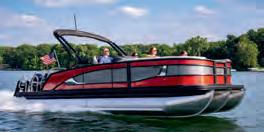






Though it was not found near the mounds in the archaeological district and its burial mounds, the condition of the item suggests it was once likely deposited with the remains of its former owner, a Native.
“I learned from Charles Hanson and a few of the museums for the fur trade that when they died they took special items with them into the new world,” Nelson said. “What they usually did was break the firearm.”
From there it all gets a little fuzzy.
It’s true that fur traders bartered with guns, which would have resulted in Indigenous








people throughout the area having access to firearms that would eventually end up in archaeological sites in similar condition.
But most of those were what are known as “trade guns,” lightweight, black powder hunting guns without rifled barrels.
Though this one has no barrel, Nelson was able to tell, based on other qualities, that this one was a rifle, not a trade gun. And that was just the tip of the iceberg.
While it is incomplete, there are many components to the butt stock that lend themselves to different countries of origins, gunsmithing practices and timelines, including: the material, the shape of the metal components, a storage box built into the butt and a chin rest on the inside of the stock.
Each tells a story. In fact, most of them tell completely contradictory stories.
In 30 years of research, Ray Nelson has attempted to learn more about the rifle parts found at Upper Hay Lake by building replicas that are both flint lock and cap style.
Travis Grimler / Echo Journal
The first thing that caught Nelson’s eye, and a big clue all its own, was the wooden box with a cover plate built into the butt.
“What stuck out tremendously was the sliding wood box for keeping components,” Nelson said. “In my years of research now going to museums in Minnesota, North Dakota, Iowa, Wisconsin and Canada, I tried to find other guns with these sliding wooden boxes (among artifacts from the same era and region). I have not seen one yet.”
One of the first comprehensive clues was the wood used to make the butt. While many guns of the time period would have used a strong, hearty wood, this rifle was made from birch.
During the early history of Minnesota when this area would have been inhabited by Native Americans, most countries would
not have made their gun stocks with birch.
“Birch was the more common wood used for guns made in Norway or Sweden in particular, and Denmark a little bit,” Nelson said.
Furthermore, the lock used in the rifle was of the type Norwegians used.
The shape of the stock further complicated things.
“The cheek rest is prominent,” Nelson said. “It’s very dramatic in the style of the Germans. When they started making rifles in the 1600s, they liked to put large cheek rests on them for your cheek to rest. When they started rifling barrels, they were the first ones to do that. Norwegians seemed to like that as well, but the French never did.”
Next was the lock plate, which had a distinct shape, known in gunsmithing circles as “banana” shaped. This shape gave clues to both the time frame and location of manufacture.
“Studying the chronological development of firearms, this type of lock plate design was around in the early 1700s, like pre-1750,” Nelson said. “It could go a bit later, for sure, but later it went straight instead of curved.”
Nelson said that design was common to French and German areas.
Even what remained of the trigger guard told a story.
“The trigger guard I’m using goes back to the areas in southwest Germany and northeast Germany,” Nelson said.
Together, all the pieces paint a confusing picture of mixing styles possibly common to manufacturers with a less stable geographic base.
“The French Huguenots got out of France,” Nelson said. They were being persecuted and they went to different parts of Germany and England and they went into Denmark and a few other countries. They were known for their craft, and they brought gun making with them and the king of Prussia at the time had them set up shops and teach the local people their trades.”




Nelson said the details point to a manufacture date within 1740-1780, likely from Germany or a Scandinavian country or inspired by that style and built by a gunsmith, possibly from England.
It could have been lost any time from the 1790s into the era of the Battle of Crosslake and later. There are reasons why it could have come from one of several countries of origin. Over 30 years, many possibilities have arisen, but nothing is clear.
The rifle is, unfortunately, missing parts that would have helped provide a better ID.
“It’s missing a lot of important things to get identified as a flintlock,” Nelson said.
As a result, it is even hard to determine if it was flintlock or caplock.
Perhaps the craziest detail is that this rifle, even surrounded as it is with uncertainty, is likely the oldest rifle artifact recovered from a Minnesota archaeological site.
“Based on artifacts I have seen,” Nelson said. “I’m going to guess (the next oldest) is from the 1830s. Before that the Northwest smooth bore trade guns were very common.”

candidates by name.
“James McGill met an Indian warrior named Noka (or Nokay) from the Green Bay area,” Nelson said. “He had to have someone guide them here and he made the first fur trade post here in our county in 1771
it came to Minnesota, and who may have owned it.
“It was (Noka’s) stomping grounds,” Nelson said. “They would have been hunting up here all the time, and Noka had a son, and his son died in the Battle of Crosslake. I sometimes wonder, could it have been broken in that battle, gotten mangled, used as a weapon?”
It was (Noka’s) stomping grounds. They would have been hunting up here all the time, and Noka had a son, and his son died in the Battle of Crosslake. I sometimes wonder, could it have been broken in that battle, gotten mangled, used as a weapon?
Oddly enough, while the time frame and origin are still puzzling, Nelson feels comfortable theorizing exactly what type of person owned the rifle, thanks to its qualities.
“This was what they called fine grade guns,” Nelson said. “They would trade them to the chiefs only. That was a part of special treaty agreements, sometimes land trades.”
He has even identified at least a few
- Ray Nelson
in Crow Wing. Noka, to his credit, for some reason went out one day and shot 30 game animals and presented them to the fur trader for food for the winter.”
Though nothing can be known for sure at this point, Nelson has a preferred theory of where the rifle came from, how and when
If that is true, there would be virtually no better place for Noka’s son and the rifle to be laid to rest than Upper Hay Lake, known by the Ojibwe (Anishanaabe) as “Manitou” or Spirit Lake, likely due to the large burial mounds located nearby.
Regardless of the unfathomable truth of the matter, the rifle is like a Schrödinger’s box of local historical events.
TRAVIS GRIMLER is a staff writer for the Pineandlakes Echo Journal weekly newspaper in Pequot Lakes/Pine River. He may be reached at 218-855-5853 or travis. grimler@pineandlakes.com.












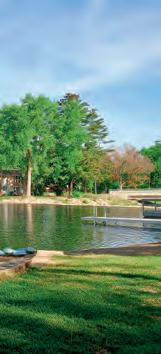













U.S. Army Corps of Engineers Gull Lake Recreation Area
10867 East Gull Lake Drive
Brainerd, MN 56401
Located on Government Point at the Gull River outlet on Gull Lake, the Gull Lake Recreation Area offers:
• Swimming beach
• Restrooms
• Changing rooms
• Picnic tables
• Playground
• Boat launch
• Fish cleaning area
• Fishing dock
• RV camping
• Campground with shower houses, fishing area, canoe access, a dump station, a playground and picnic shelters
U.S. Army Corps of Engineers Cross Lake Recreation Area
35507 County Road 66 Crosslake, MN 56442
Located off County Road 66 in Crosslake, the Cross Lake Recreation Area offers:
• Swimming beach with a playground and picnic tables
• Boat launch
• Over 100 campsites
• Several fishing docks
• Picnic shelters
• Restrooms
• Fish cleaning
• Dump station
Pelican Lake Beach
27203 Pelican Lake Road
Merrifield, MN 56465
Located off County Road 118 on Pelican Lake Road, Pelican Beach offers:
• Sandy, shallow swimming beach
• Restrooms
• Changing rooms
• Picnic tables
Whipple Beach Recreational Area
14441 Oakwood Drive
Baxter, MN 56425
Located off Oakwood Drive in Baxter, Whipple Beach offers:
• Sandy swimming beach
• Restrooms
• Vending machines
• Shower
• Changing rooms
• Picnic tables
• Playground near the beach
• Boat launch
• Fishing docks
• Trails
Pillager Lake-Swimming Beach
Located off Pillager Lake Drive Southwest, this Pillager location offers:
• Swimming beach
• Picnic tables
• Fishing
• Boat landing
Serpent Lake-Swimming Beach
Located in Crosby, this location offers:
• Swimming beach
• Restrooms
• Changing rooms
• Picnic tables
• Playground
• Boat launch
• Fishing docks
• RV campground
• Skate park
Lum Park on Rice Lake - Brainerd
Located off Highway 210 at Lum Park in east Brainerd, this location offers:
• Swimming beach
• Restrooms
• Changing rooms
• Picnic tables
• Event pavilions
• Playground
• Boat launch
• Fishing dock
• Camping
• Disc golf



Jennah Fox shared this photo of her daughter, Ezmae Fox, playing with her friend, Frank Voigt, at Pelican Beach.
Kater Park - Pine River
Located in Pine River, this location offers:
• Swimming beach
• Picnic tables
• Boat landing
• Fishing docks
• Food nearby
Sources include Brainerd Lakes Vacationland at brainerd.com





















The Whitefish Chain is becoming more popular for reasons many might not know or even understand.
Tucker Jobe is a 2021 Pequot Lakes High School graduate who grew up around the chain. The 21-year-old area resident spends most summer days and even a few winter days on the northern Crown Wing County lakes doing something he was born to do — make video content.
Jobe is a social media influencer who makes wake-surfing videos of himself using everything but a wakeboard to glide across the beautiful blue waters of the Whitefish Chain.
“I started creating social media content about wake surfing when I was 16 or so,” Jobe said. “I started filming videos and then TikTok started blowing up and I just started replying to comments on my videos. People suggested I try surfing this or that. I ended up doing that and stuck with it and things grew from there.”
Jobe has used anything from the roof of a Jeep, a toilet seat, a ladder and even a door to make videos of him wake surfing.
He said around 2019 his popularity and followers began to grow. He loaded his videos onto Instagram, TikTok and YouTube. It was TikTok that helped Jobe’s name explode.
“It was a motivational drive,” Jobe said about watching his follower numbers grow. “We had something cool here. I was just trying to find a way to make revenue with it and that’s kind of what I did. I just kept going with it. I was

Tucker Jobe has found his calling as a social media influencer specializing in the sport of wake surfing. Contributed photos
just constantly creating videos.
“Then I would reach out to other brands and partner with them. I’ve reached out to Supra Boats. I’ve done a couple of things with them. You’re just constantly networking with other brands and you grow together,” he said.
Jobe recently partnered with Alluvium Marine on a signature mini jet boat made and crafted in Jenkins. He’s also partnered with Dave Syverson Auto Center out of Albert Lea.
“I partner with these brands because they see me almost as a marketing tool,” Jobe said. “I generate hundreds of millions of views, so brands want me

to promote their service or product in my videos to get them exposure.”
Jobe’s video career began with doing real estate videography. He grew up interested in cameras and filmmaking. That spiraled into making wake-surfing videos and the masses wanted more.
Jobe dove into water sports when he was 10. He’d hop on his friend’s boat and they would take off, spending hours on the surrounding waters.
Now Jobe owns multiple boats. He and his film crew, composed of former classmates and friends, create content that appeases the 400,000 followers Jobe has across all platforms.
He receives millions of views on Instagram, TikTok, Snapchat and YouTube.
Jobe’s friends, Griffin Dahlberg and Nolan Oliver, are also featured in the videos and handle the video production side of the operation.
“We grew up just doing this for fun, but now it’s cool because I get to bring my friends along and pay them to do what we love to do,” Jobe said. “I’ve done a lot of crazy things.”
Jobe hopes to parlay this venture into a watersports brand where he’ll sell surf vests, wakeboard ropes, swim trunks and other accessories involved with watersports. He’s already got a name for it — Revival Wake. The line will be released later this year.
“It’s a blast,” Jobe said. “I get to do what I want every day. I’m making videos with my friends. I do this full time now. The plan is to keep up with the videos, continue to build positive relationships with brands and see how much bigger this can get.”
JEREMY MILLSOP is the sports editor for the Brainerd Dispatch. he may be reached at 218-855-5856 or jeremy.millsop@brainerddispatch.com. Follow on Twitter at www.twitter.com/jeremymillsop.

The plan is to keep up with the videos, continue to build positive relationships with brands and see how much bigger this can get.
- Tucker Jobe










LAKE MAP SPONSORED BY:
Lake Latitude Boutique 5314 Nisswa Ave Nisswa, Mn 56468
218-961-1087
www.lakelatitude.com

SCAN FOR LAKE MAP & INFO

LAKE MAP SPONSORED BY:
Rylie Fussy Weber
Mike Kennedy Group 218-831-4870
RylieWeber@ EdinaRealty.com

SCAN FOR
LAKE MAP SPONSORED BY:
JANENE IMGRUND Realty Group, LLC
Realtor®, SFR®, Power Agent® 218-851-0566
LAKE MAP SPONSORED BY:
CB Crown Realtors - Real Estate Pros
Tyler Hendrickson tyler.hendrickson@cbcrown.com 218-546-3162
Tom Kirzeder tom.kirzeder@cbcrown.com 612-419-5297
LAKE MAP SPONSORED BY: Crystal Stahl
Mike Kennedy Group - Edina Realty 218-833-9616
CrystalStahl@ EdinaRealty.com
CrystalStahl.com




















